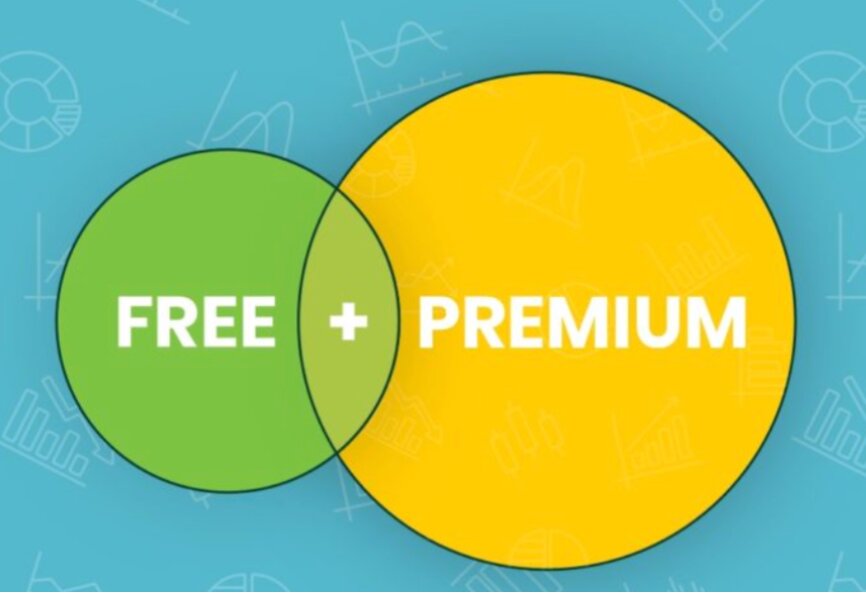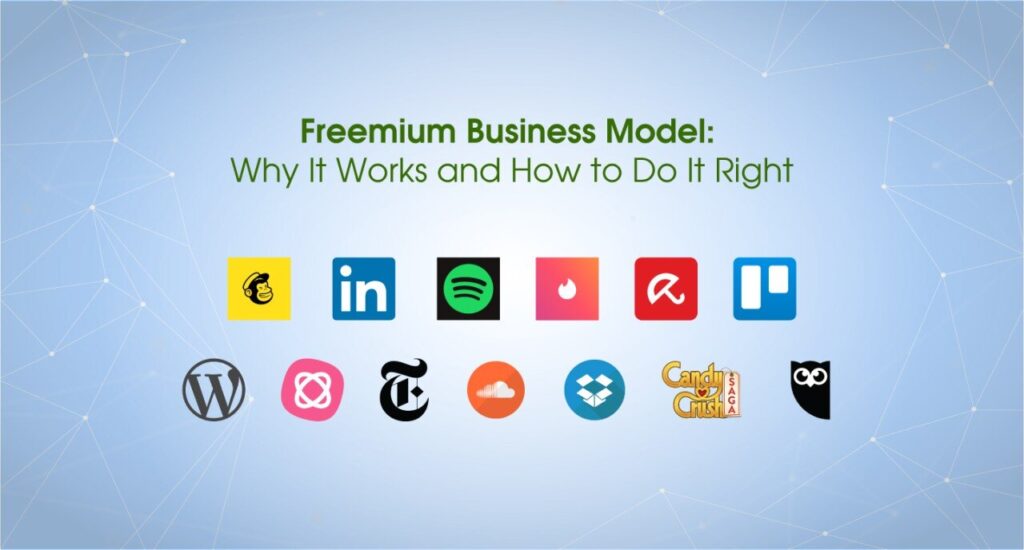In today’s digital world, you’ve probably come across software that offers both free and paid versions. But when a software is freemium, what does that mean?
When a software is freemium, what does that mean? It means the software is free to use with basic features, while advanced features require payment. Companies use this model to attract users with free access and encourage upgrades to premium plans for full functionality.
This article will break down the concept of freemium software, how it works, its advantages and disadvantages, and why companies use this business model. Whether you’re a consumer or a business owner, understanding freemium software can help you make informed decisions.
What Does Freemium Mean?
A freemium software is a type of software that combines the words “free” and “premium.” This means users can use the basic version of the software for free, but some advanced features or tools are only available if they pay. Many companies use the freemium model to let people try the software without cost, hoping they will later choose to buy the premium version for more benefits. The freemium approach is popular because it helps users explore the software and decide if they want to upgrade. With freemium software, users get a free experience while having the option to pay for extra features.

The freemium business model is designed to attract many users by offering free access to the software’s basic features. However, the company makes money when users purchase the premium version with extra tools or services. Many apps, games, and online tools use the freemium model to grow their user base. Freemium software is a great way for people to test a product before deciding if they want to spend money on it. Since freemium software is free to start, it encourages more people to try it. The freemium model benefits both users and companies, making it a common strategy in the digital world.
How Does Freemium Software Work?
1. Free Version:
The free version of a freemium software typically includes basic features that allow users to experience the product. However, these features may have limitations, such as restricted storage, limited access to tools, or ads.
2. Premium Version:
The premium version unlocks advanced features, removes limitations, and enhances user experience. Users pay a one-time fee or a recurring subscription to access these features.
3. Monetization Strategy:
Companies make money by converting free users into paying customers. This is done by offering compelling premium features, excellent customer service, and marketing strategies.
Comparison of Freemium vs. Premium Software!
When a software is freemium, what does that mean compared to a fully premium model? The table below highlights key differences:
| Feature | Freemium Software | Premium Software |
| Cost | Free with limited features | Paid access to all features |
| User Access | Available to all users | Only for paying customers |
| Revenue Model | In-app purchases, ads, subscriptions | One-time purchase or subscription |
| Feature Availability | Basic features free, advanced paid | All features included |
| User Base | Large due to free access | Smaller, but committed users |
| Upgrade Incentive | Encourages users to pay for more features | Already monetized from the start |
This comparison shows how the freemium model attracts a larger audience, while the premium model ensures revenue from every user.
Examples of Popular Freemium Software!
1. Spotify:
Spotify offers free music listening with advertisements. The premium version removes ads and provides offline listening and better sound quality.
2. Dropbox:
Dropbox offers limited free cloud storage.A premium package is required for users who require additional storage.
3. Zoom:
Zoom provides free video conferencing but limits the duration of meetings. Premium plans offer longer meeting times and advanced features.
4. Canva:
Canva offers free design tools with basic features. The premium version provides advanced design options and premium content.
Benefits and Challenges of Freemium Software!
When a software is freemium, what does that mean for users and developers? The freemium model offers several benefits, such as allowing users to try the software for free, increasing its user base, and providing companies with opportunities to convert free users into paying customers. It lowers the barrier to entry, making it easier for people to test the software before committing to a purchase.
However, challenges also exist. Some users may never upgrade to the premium version, making it difficult for companies to generate revenue. Additionally, maintaining free features requires ongoing costs, which can put pressure on the developers. Balancing free and premium features effectively is key to a successful freemium strategy.
Read: Invesco Ai And Next Gen Software Etf – A Smart Investment In Ai And Technology Stocks!
Advantages of Freemium Software!
1. Free Access for Users:
Users can try the software without any financial commitment.
2. Low Entry Barrier:
Freemium models lower the barrier to entry, making it easy for users to adopt the software.
3. Scalability:
Companies can scale their user base quickly and monetize effectively.
Disadvantages of Freemium Software!
1. Limited Features in Free Version:
Users may find the free version too restrictive.
2. Conversion Challenges:
Not all free users convert into paying customers, making profitability challenging.
3. Operational Costs:
Maintaining free users can be costly for companies.
Why Do Companies Use the Freemium Model?
Freemium software helps companies attract a large number of users quickly. Since the basic version is free, more people are willing to try it. As more users download and use the freemium software, the brand becomes more well-known. This increased visibility helps the company reach a bigger audience and build trust. Many users who enjoy the freemium software may later decide to upgrade to the premium version for better features.

Another advantage of freemium software is that it encourages users to rely on it. Once people start using freemium software regularly, they may want more advanced options. This makes them more likely to pay for the premium version. Freemium software allows companies to offer value while also making money from upgrades. By offering freemium software, companies can keep users engaged and interested in the product. Freemium software is a great way to build a strong customer base while increasing sales.
How to Decide If a Freemium Model Is Right for Your Business?
1. Consider Your Product’s Value:
If your software has premium features that users will pay for, freemium may work.
2. Analyze Your Competition:
Check if competitors use the freemium model successfully.
3. Evaluate Costs and Revenue:
Ensure you can sustain free users while generating revenue from premium users.
Read: Ai Governance Software – A Complete Guide For Businesses In 2025!
FAQs:
1. What is the main purpose of freemium software?
The main purpose of freemium software is to attract users with a free version and encourage them to upgrade to the premium version for additional features.
2. How do companies make money with freemium software?
Companies make money by offering premium features, subscriptions, and removing limitations in the paid version.
3. Is freemium software completely free?
No, freemium software has a free version, but advanced features require payment.
4. What are some examples of freemium software?
Examples include Spotify, Dropbox, Zoom, and Canva.
5. Is freemium a good business model?
Yes, but it depends on the company’s ability to convert free users into paying customers while managing operational costs.
Conclusion:
When a software is freemium, what does that mean? It means users get basic features for free while premium features require payment. The freemium model helps companies attract users, build brand awareness, and generate revenue. However, it also comes with challenges such as high operational costs and conversion difficulties. Understanding the pros and cons of freemium software can help both users and businesses make informed decisions.
Also Read:
- Software Can Base on Document and AI Search in Chatbot – A complete guide!
- Can Ai Navigate Software On Its Own – A Comprehensive Guide!
- Veterinary Radiology AI Software – The Future of Animal Diagnostics!
- Best Ai Dj Software – The Ultimate Guide!
- Procurement Ai Software – Revolutionizing Supply Chain Management!










